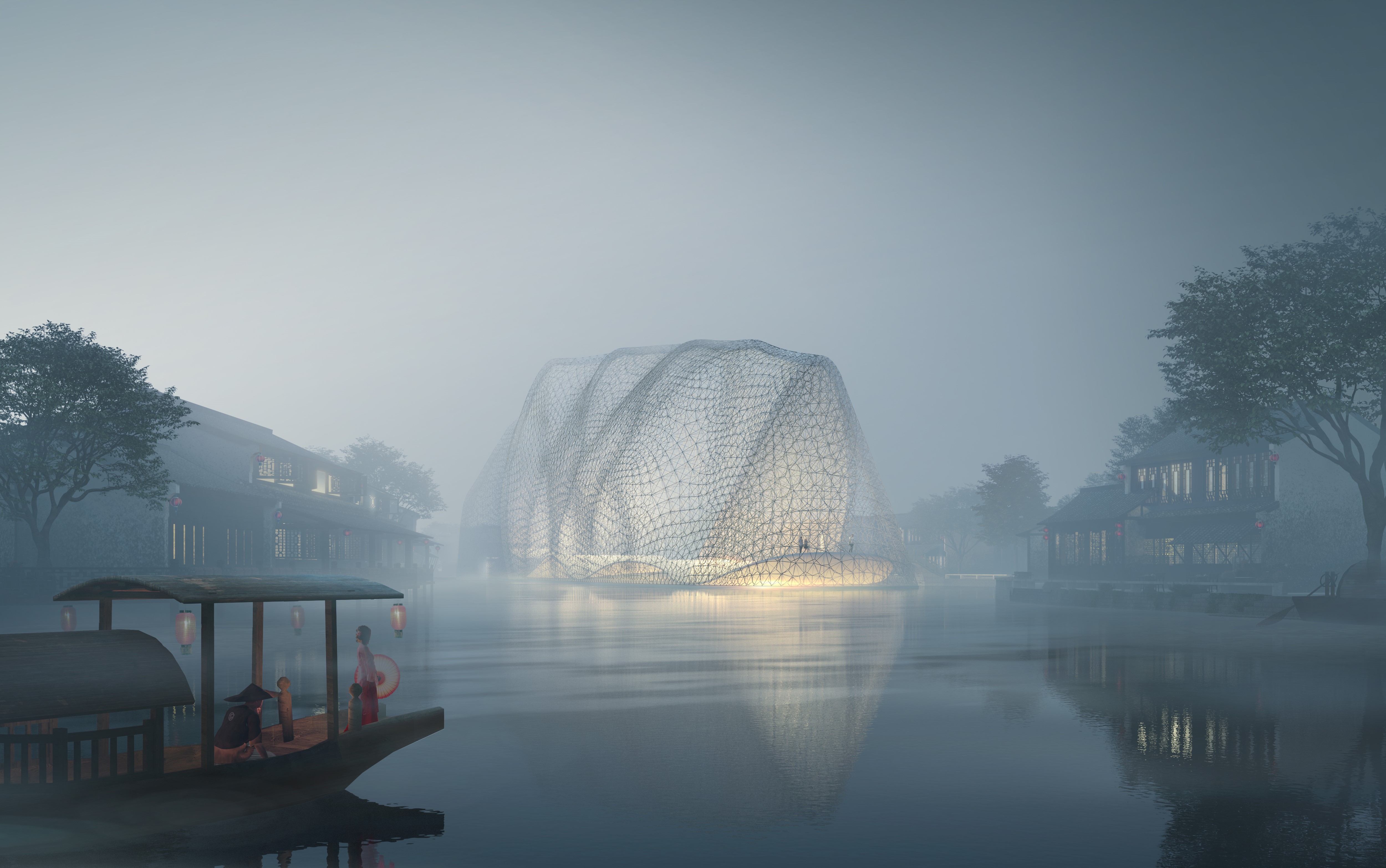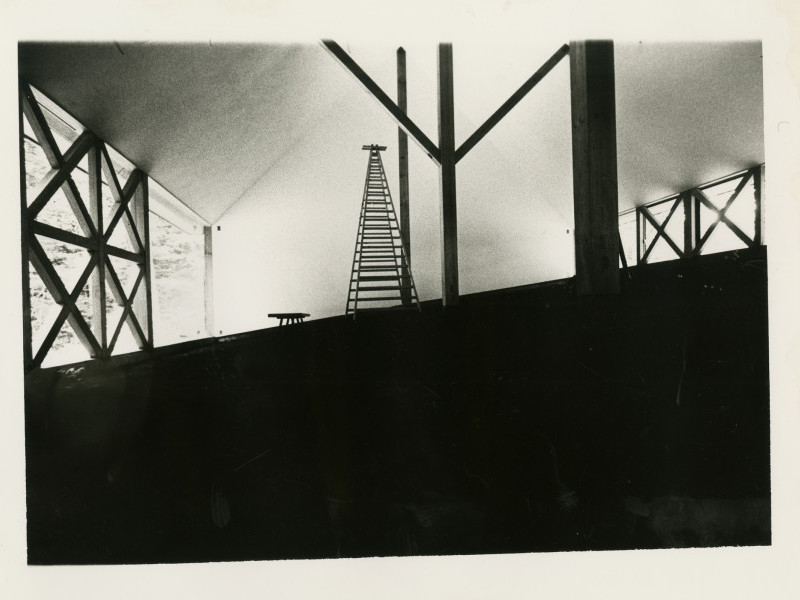
Puyuan Design and Event Center, 2019
Kazuyo Sejima
Puyuan Design and Event Center
2019
Courtesy of Kazuyo Sejima & Associates
search


Kazuyo Sejima
Puyuan Design and Event Center
2019
Courtesy of Kazuyo Sejima & Associates
Reflecting on the intimate role architecture plays in our lives, Remain Calm explores the work of notable Japanese architects and an artist who use traditional concepts to create physical spaces with both modern and contemporary resonance. Conventionally understood as a space of enclosure, architecture exists independent of the external world, and yet simultaneously in dialogue with its surrounding environment.
Remain Calm draws inspiration from the thirteenth century poet Kamo no Chōmei and looks to the hut, or hermitage, as a prototype that illustrates one of the underlying spiritual aspects of Japanese architecture. Having witnessed famine, natural disaster and war, Chōmei became a hermit and retreated to a tiny, collapsible hut that he moved along the banks of the Kamo River. This portable shelter offered Chōmei a place for quiet reflection, a space to remain calm—independent from the outside world while at the same time connected to the surrounding environment through sensory perception. The exhibition examines architectural projects that date from the thirteenth century to the present, from both historic and contemporary perspectives, through the lens of two key themes: solitude and connectivity.
The modern and contemporary projects presented in this exhibition have inherited simplicity, serenity—and autonomy from, yet connection with, the outside world—qualities integral to Japanese huts, tea ceremony rooms and traditional sukiya-zukuri residential architecture that originated in Zen culture. The exhibition introduces visitors to experiments in Japanese architecture that aesthetically, stylistically and methodologically demonstrate a similar clarity of construction.
Remain Calm features an expansive design, which includes sculptural models that explore abstract concepts, spatial and performative multi-media installations as well as drawings, photographs and scale models of architectural projects. A model of Sen no Rikyū’s Tai-an tea house serves as the starting point of this survey, which subsequently introduces the work of emergent and established architects Koji Fujii, Togo Murano, Sutemi Horiguchi, Toyo Ito, Kazuyo Sejima, Junya Ishigami, onishimaki + hyakudayuki architects, Shingo Masuda and Katsuhisa Otsubo, alongside an installation and a performance by artist Nile Koetting.
The third in a four-year series of exhibitions curated by Yuko Hasegawa for Sharjah Art Foundation, this exhibition explores ideas that resonate powerfully in these uncertain times when the pandemic has made staying at home the ‘new normal’, while disrupting individual connectivity to an outside world that feels fraught with challenges, risk and unknown possibilities. Remain Calm is a proposition for a place to contemplate the possibilities of new lifestyles and modes of human existence: to cultivate serenity infused with a richness of thought, to nurture ways of life that are both productive and intellectual, and to understand the choice between isolation, exclusion and connection as a process of negotiation.
This exhibition is supported by the Goethe-Institut.

One of the most influential architects in postwar Japan, Kazuo Shinohara (1925–2006) established his own idiosyncratic stance by way of his formal mathematical training and his mature deductive thought process as exercised throughout the second half of the twentieth century.